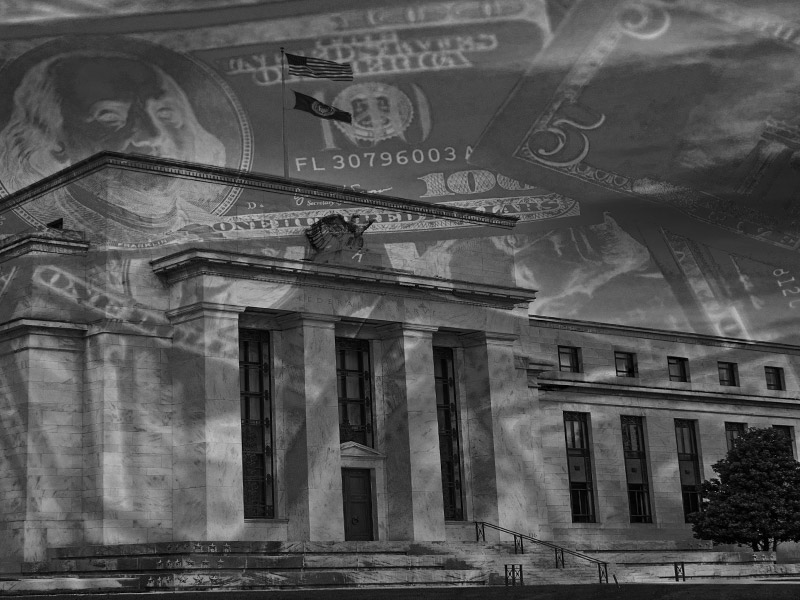For several calendar quarters, inflation has been the topic of discussion. The final Consumer Price Index (CPI) of the year showed that December’s Headline Inflation was 6.5% and Core CPI, which excludes food and energy costs, was 5.7%.
Looking at 2022 retrospectively, Headline CPI peaked in June at 9.1%, and Core CPI peaked a few months later in September at 6.6%. While the overall inflation numbers are falling, there are some critical components that remain problematic.
The “Food at Home” component, for example, continues to be a contributing factor to the stickiness of the Headline CPI number. Shelter costs, a hefty one-third of the Bureau of Labor Statistics (BLS) inflation calculation, are also holding inflation higher.
Equity markets rallied several times last year on falling CPI news and comments made by Chairman Powell. Some of these, like the November 10th one-day market surge, were laughable.
While there has been zero inclination, spoken or otherwise that the Fed will change course until inflation is stamped out, the market seems to be trying to read between the lines and manufacture a narrative that the Fed will stop raising rates.
According to the December Fed minutes, all twelve voting members on the Federal Open Market Committee are unanimously against cutting rates until at least 2024.
For the FOMC, getting inflation under control and keeping it under control IS the priority, not the levels of the Nasdaq, S&P 500, or Dow Jones Industrial Average. The next decision on rates will come on February 1st and it appears certain that the Fed raises at least another 25 basis points.
Inflation’s rate of change and the stability of the financial system and labor market will likely dictate future rate hikes in 2023. Regardless, rates will stay higher for longer.
Powell understands the mistakes that were made in the late 70’s and early 80’s by then Fed Chairmen, Arthur Burns and Paul Volker. Both mistakenly cut rates too soon. The burning embers of high inflation were not nearly extinguished, and they reignited, causing hyperinflation to last longer during that time.
Fresh off the major market indices having their worst year since 2008, pundits are placing various odds on the likelihood of a U.S. recession.
The terms “soft landing” and “hard landing” are being tossed around the financial media with regularity.
In other words, can the Fed “pull a rabbit out of its hat” by getting inflation under control with rate hikes and quantitative tightening without cratering the economy (soft landing), or do their policies effectively crush the economy for a period of time (hard landing)?
It’s beginning to seem as though a soft landing and bringing inflation back to somewhat reasonable levels are mutually exclusive.
The pace that the economy is slowing is beginning to quicken.
In December, The ISM® Report On Business® for Manufacturing (PMI®) and Services (PMI®) – two of the most reliable economic indicators available, showed that the U.S. economy inflected from growing to contracting, hitting the lowest readings for both parts of the economy since May 2020.
Additionally, the latest GDP report showed that the economy grew by 2.9% quarter-over-quarter in Q4. This was a nice “feel good” headline, but zooming out, that represented a slowdown on yearly basis from 1.94% to .96% annualized economic growth.
Lastly, earnings season was positive for S&P 500 companies in Q3 of 2022. On the aggregate, sales growth was +11.5%, and earnings growth (EPS) was +3.5%.
Despite positive growth, it is notable that top line sales growth slowed slightly, and bottom-line earnings slowed nearly 50% from the prior quarter.
A profit recession may also be on the horizon. Perhaps Q4 earnings season ends without too many stock blowups and negative earnings revisions. Time will tell.
Regardless, there is the potential for two consecutive quarters of negative quarter-over-quarter GDP growth (Q1 and Q2 of 2023). This will continue to slow sales growth and squeeze earnings.
Companies will have to bring down shareholder and analyst expectations while battling macroeconomic headwinds. Layoffs will also accelerate as companies cut employee head count to adjust to slowing demand and to reduce costs. Ultimately the weakest among the corporate herd will be culled by way of bankruptcy.
None of this is new and it is certainly nothing to fear. This is the same cycle that plays out every time the economy is allowed to work through its seasons from growth to recession and back again. This is how it should work.
Central banks shouldn’t be bailing out the financial markets; this nonsense has been going on for far too long.
So long as Chairman Powell doesn’t succumb to the impending louder cries and whines of Wall Street, what lies on the other side of the economic cycle and dramatic shift in Fed policy, could be a more investable market where fundamentals and prudent risk-taking once again matter and reckless speculation is no longer in vogue.
Referenced Sources:
- www.federalreserve.gov
- Hedgeye Risk Management
- Bloomberg
- Institute for Supply Management
- U.S. Bureau of Labor and Statistics
- CME Group
- Yahoo Finance
- Atlantafed.org
- Cato Institute
- Brookings Institute



